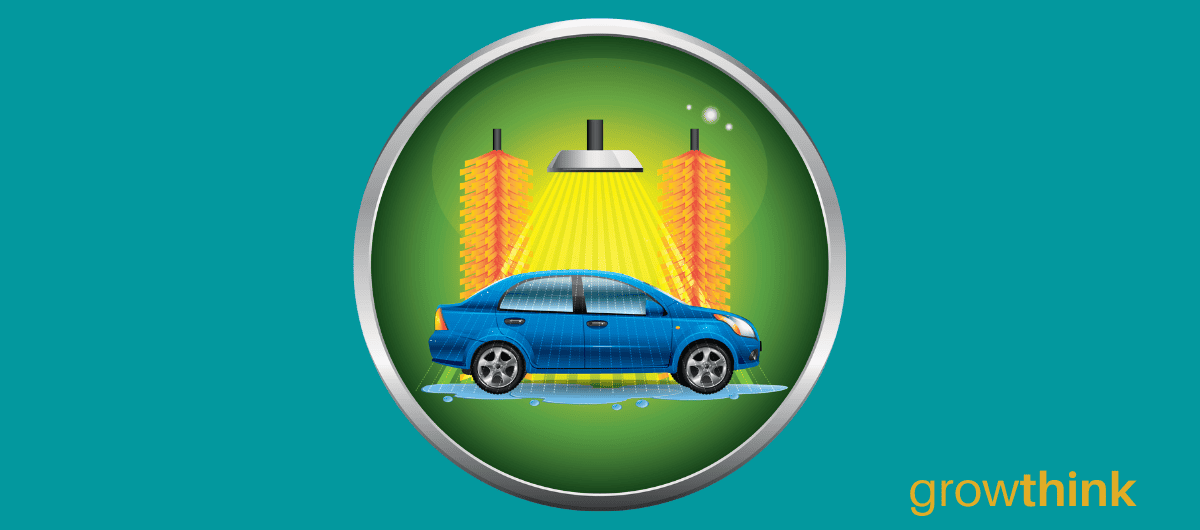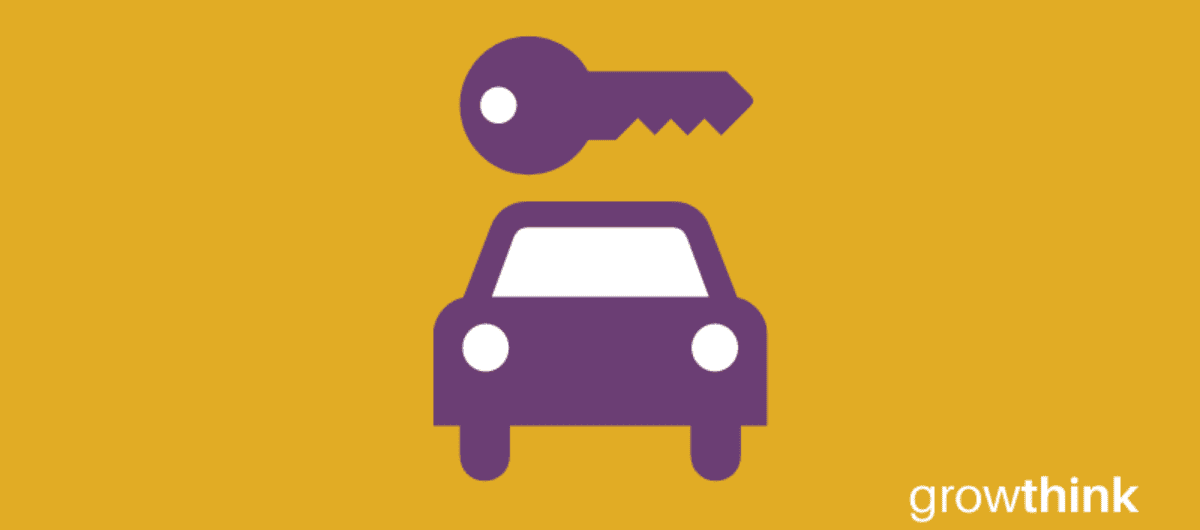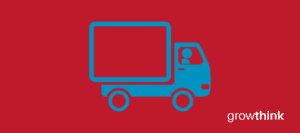Car Dealership Business Plan
Over the past 20+ years, we have helped over 4,000 entrepreneurs create business plans to start and grow their car dealerships. On this page, we will first give you some background information with regards to the importance of business planning. We will then go through a car dealership business plan template step-by-step so you can create your plan today.
What Is a Car Dealership Business Plan?
A business plan provides a snapshot of your car dealership as it stands today, and lays out your growth plan for the next five years. It explains your business goals and your strategy for reaching them. It also includes market research to support your plans.
Why You Need a Business Plan for Your Car Dealership
If you’re looking to start a car dealership or grow your existing car dealership you need a business plan. A business plan will help you raise funding, if needed, and plan out the growth of your car dealership in order to improve your chances of success. Your car dealership business plan is a living document that should be updated annually as your company grows and changes.
Source of Funding for Car Dealership Businesses
With regards to funding, the main sources of funding for a car dealership are personal savings, bank loans and angel investors. With regards to bank loans, banks will want to review your business plan and gain confidence that you will be able to repay your loan and interest. To acquire this confidence, the loan officer will not only want to confirm that your financials are reasonable. But they will want to see a professional plan. Such a plan will give them the confidence that you can successfully and professionally operate a business.
The second most common form of funding for a car dealership is angel investors. Angel investors are wealthy individuals who will write you a check. They will either take equity in return for their funding, or, like a bank, they will give you a loan.
Finish Your Business Plan Today!
If you’d like to quickly and easily complete your business plan, download Growthink’s Ultimate Car Dealership Business Plan Template and complete your plan and financial model in hours.
Car Dealership Business Plan Template
Your business plan should include 10 sections as follows:
Executive Summary
Your executive summary provides an introduction to your business plan, but it is normally the last section you write because it provides a summary of each key section of your plan.
The goal of your Executive Summary is to quickly engage the reader. Explain to them the type of car dealership you are operating and the status; for example, are you a startup, do you have a car dealership that you would like to grow, or are you operating a chain of car dealerships.
Next, provide an overview of each of the subsequent sections of your plan. For example, give a brief overview of the car dealership industry. Discuss the type of car dealership you are operating. Detail your direct competitors. Give an overview of your target customers. Provide a snapshot of your marketing plan. Identify the key members of your team. And offer an overview of your financial plan.
Company Analysis
In your company analysis, you will detail the type of car dealership you are operating.
For example, you might operate one of the following types:
- New Car Dealers: this type of car dealership business typically sells both new and used passenger vehicles. Usually, this type of dealership also has a service department and also sells parts.
- Used Car Dealership: this type of car dealership sells used passenger vehicles, including cars, light trucks, sports utility vehicles (SUVs) and passenger vans.
- Online Car Dealership: this type of car dealership retails automobiles online to consumers and businesses and provides services to aid in the purchase of automobiles. Some players offer their customers trade-in, car financing and car selling services.
In addition to explaining the type of car dealership you operate, the Company Analysis section of your business plan needs to provide background on the business.
Include answers to question such as:
- When and why did you start the business?
- What milestones have you achieved to date? Milestones could include sales goals you’ve reached, new store openings, etc.
- Your legal structure. Are you incorporated as an S-Corp? An LLC? A sole proprietorship? Explain your legal structure here.
Industry Analysis
In your industry analysis, you need to provide an overview of the car dealership business.
While this may seem unnecessary, it serves multiple purposes.
First, researching the car dealership industry educates you. It helps you understand the market in which you are operating.
Secondly, market research can improve your strategy particularly if your research identifies market trends. For example, if there was a trend towards vehicles, it would be helpful to ensure your plan calls for plenty of options.
The third reason for market research is to prove to readers that you are an expert in your industry. By conducting the research and presenting it in your plan, you achieve just that.
The following questions should be answered in the industry analysis section of your car dealership business plan:
- How big is the car dealership business (in dollars)?
- Is the market declining or increasing?
- Who are the key competitors in the market?
- Who are the key suppliers in the market?
- What trends are affecting the industry?
- What is the industry’s growth forecast over the next 5 – 10 years?
- What is the relevant market size? That is, how big is the potential market for your car dealership. You can extrapolate such a figure by assessing the size of the market in the entire country and then applying that figure to your local population.
Customer Analysis
The customer analysis section of your car dealership business plan must detail the customers you serve and/or expect to serve.
The following are examples of customer segments: college students, soccer moms, baby boomers, etc.
As you can imagine, the customer segment(s) you choose will have a great impact on the type of car dealership you operate. Clearly baby boomers would want a different atmosphere, pricing and product options, and would respond to different marketing promotions than college students.
Try to break out your target customers in terms of their demographic and psychographic profiles. With regards to demographics, include a discussion of the ages, genders, locations and income levels of the customers you seek to serve. Because most car dealerships primarily serve customers living in their same city or town, such demographic information is easy to find on government websites.
Psychographic profiles explain the wants and needs of your target customers. The more you can understand and define these needs, the better you will do in attracting and retaining your customers.
Finish Your Car Dealership Business Plan in 1 Day!
Don’t you wish there was a faster, easier way to finish your business plan?
With Growthink’s Ultimate Car Dealership Business Plan Template you can finish your plan in just 8 hours or less!
Click here to finish your Car Dealership business plan today.
Competitive Analysis
Your competitive analysis should identify the indirect and direct competitors your business faces and then focus on the latter.
Direct competitors are other car dealerships.
Indirect competitors are other options that customers have to purchase from that aren’t direct competitors. This primarily includes private sellers. You need to mention such competition to show you understand that not everyone in the market for a car shops at a dealership.
With regards to direct competition, you want to detail the other car dealerships with which you compete. Most likely, your direct competitors will be car dealerships located very close to your location.
For each such competitor, provide an overview of their businesses and document their strengths and weaknesses. Unless you once worked at your competitors’ businesses, it will be impossible to know everything about them. But you should be able to find out key things about them such as:
- What types of customers do they serve?
- What types of automobiles do they offer?
- What is their pricing (premium, low, etc.)?
- What are they good at?
- What are their weaknesses?
With regards to the last two questions, think about your answers from the customers’ perspective. And don’t be afraid to stand outside your competitors’ locations and ask customers as they leave what they like most and least about them.
The final part of your competitive analysis section is to document your areas of competitive advantage. For example:
- Will you provide superior products and/or services?
- Will you provide cars that your competitors don’t offer?
- Will you make it easier or faster for customers to acquire your products?
- Will you provide better customer service?
- Will you offer better pricing?
Think about ways you will outperform your competition and document them in this section of your plan.
Marketing Plan
Traditionally, a marketing plan includes the four P’s: Product, Price, Place, and Promotion. For a car dealership business plan, your marketing plan should include the following:
Product: in the product section you should reiterate the type of car dealership that you documented in your Company Analysis. Then, detail the specific products you will be offering. For example, in addition to selling new cars, will you offer leasing options?
Price: Document the prices you will offer and how they compare to your competitors. Essentially in the product and price sub-sections of your marketing plan, you are presenting the inventory you will maintain and the price ranges.
Place: Place refers to the location of your car dealership. Document your location and mention how the location will impact your success. For example, is your car dealership located next to a high-traffic retail area, or on a main thoroughfare, etc. Discuss how your location might provide a steady stream of customers.
Promotions: the final part of your car dealership marketing plan is the promotions section. Here you will document how you will drive customers to your location(s). The following are some promotional methods you might consider:
- Making your car dealership extra appealing to attract passing customers
- Pay per click advertising
- Advertising in local papers and magazines
- Reaching out to local bloggers and websites
- Social media advertising
- Flyers
- Local radio advertising
- Banner ads at local venues
Building Trust
Building trust between a car dealer and its customers is vital to a successful sales strategy. This should be clear in the business plan, where funders look to see the feasibility of the company once it’s launched. Earning customer trust is important because of the bad reputation, deserved or not, for car salespeople to try to take advantage of customers and because of the high amount of stress which the purchase of a large item like a car causes for buyers.
Below are the best ways to build trust in your customers.
Referrals and Testimonials
Running a dealership with a heavy focus on satisfied customers referring other potential customers can create positive word-of-mouth between contacts who already know and trust each other. An additional element to this is securing testimonial statements (either written or videotaped) from happy customers. This requires having those happy customers in the first place, as customers can sense if the testimonials are canned and will mistrust even further.
Transparency
If auto dealerships were extremely clear about all pricing, fees, and costs of ownership up front, customers might change their opinion of these companies. However, too often there is a great focus on a low sticker price to attract customers who later on feel they’ve been lied to when all of the add-on charges are explained. Can your dealership change this industry practice and make transparency into a competitive advantage?
Taking Your Time
By taking the sales process at a rate that the customer is comfortable with, you recognize that it is a difficult step for customers to walk into the world of the dealer and play on his home turf, so to speak. They will be feeling defensive and a bit thrown off, so tell them that you will take the time to answer any questions they have and to make sure they understand and have considered their options before moving forward.
Finish Your Business Plan Today!
If you’d like to quickly and easily complete your business plan, download Growthink’s Ultimate Car Dealership Business Plan Template and complete your plan and financial model in hours.
Operations Plan
While the earlier sections of your car sales business plan explained your goals, your operations plan describes how you will meet them. Your operations plan should have two distinct sections as follows.
Everyday short-term processes include all of the tasks involved in running your car dealership such as serving customers, completing necessary paperwork, keeping the dealership clean, etc.
Long-term goals are the milestones you hope to achieve. These could include the dates when you expect to serve your 1,000th customer, or when you hope to reach $X in sales. It could also be when you expect to hire your Xth employee or launch a new location.
Management Team
To demonstrate your car dealership’s ability to succeed as a business, a strong management team is essential. Highlight your key players’ backgrounds, emphasizing those skills and experiences that prove their ability to grow a company.
Ideally you and/or your team members have direct experience in the car dealership business. If so, highlight this experience and expertise. But also highlight any experience that you think will help your business succeed.
If your team is lacking, consider assembling an advisory board. An advisory board would include 2 to 8 individuals who would act like mentors to your business. They would help answer questions and provide strategic guidance. If needed, look for advisory board members with experience in car dealerships and/or successfully running retail and small businesses.
Financial Plan
Your financial plan should include your 5-year financial statement broken out both monthly or quarterly for the first year and then annually. Your financial statements include your income statement, balance sheet and cash flow statements.
Income Statement: an income statement is more commonly called a Profit and Loss statement or P&L. It shows your revenues and then subtracts your costs to show whether you turned a profit or not.
In developing your income statement, you need to devise assumptions. For example, will you serve 20 customers per week or 75? And will sales grow by 2% or 10% per year? As you can imagine, your choice of assumptions will greatly impact the financial forecasts for your business. As much as possible, conduct research to try to root your assumptions in reality.
Balance Sheets: While balance sheets include much information, to simplify them to the key items you need to know about, balance sheets show your assets and liabilities. For instance, if you spend $100,000 on building out your car dealership, that will not give you immediate profits. Rather it is an asset that will hopefully help you generate profits for years to come. Likewise, if a bank writes you a check for $100.000, you don’t need to pay it back immediately. Rather, that is a liability you will pay back over time.
Cash Flow Statement: Your cash flow statement will help determine how much money you need to start or grow your business, and make sure you never run out of money. What most entrepreneurs and business owners don’t realize is that you can turn a profit but run out of money and go bankrupt. For example, let’s say a company approached you with a $1,000,000 fleet order, that would cost you $500,000 to fulfill. Well, in most cases, you would have to pay that $500,000 now for inventory, transportation, employee salaries, etc. But let’s say the company didn’t pay you for 180 days. During that 180 day period, you could run out of money.
In developing your Income Statement and Balance Sheets, be sure to include several of the key costs needed in starting or growing a car dealership:
- Location build-out including design fees, construction, etc.
- Cost of equipment like computer hardware and software, etc.
- Cost of maintaining an adequate amount of supplies
- Payroll or salaries paid to staff
- Business insurance
- Taxes and permits
- Legal expenses
Appendix
Attach your full financial projections in the appendix of your plan along with any supporting documents that make your plan more compelling. For example, you might include your store design blueprint or location lease.
Car Dealership Business Plan Summary
Putting together a business plan for your car dealership is a worthwhile endeavor. If you follow the template above, by the time you are done, you will truly be an expert. You will really understand the car dealership business, your competition and your customers. You will have developed a marketing plan and will really understand what it takes to launch and grow a successful car dealership business.
Car Dealership Business Plan PDF
You can download our car dealership business plan PDF here or use our sample car dealership business plan to help you get started on your own business plan.
For the quickest and easiest way to complete your business plan, Growthink’s Ultimate Car Dealership Business Plan Template has numerous features not available in the free template including automated financial projections which calculate your complete five-year financial projections including income statements, balance sheets, and cash flow statements.
Finish Your Car Dealership Business Plan in 1 Day!
Don’t you wish there was a faster, easier way to finish your Car Dealership business plan?
With Growthink’s Ultimate Car Dealership Business Plan Template you can finish your plan in just 8 hours or less!
Click here to finish your Car Dealership business plan today.
OR, Let Us Develop Your Plan For You
Since 1999, Growthink has developed business plans for thousands of companies who have gone on to achieve tremendous success.
Click here to see how Growthink’s business plan advisors can give you a winning business plan.











